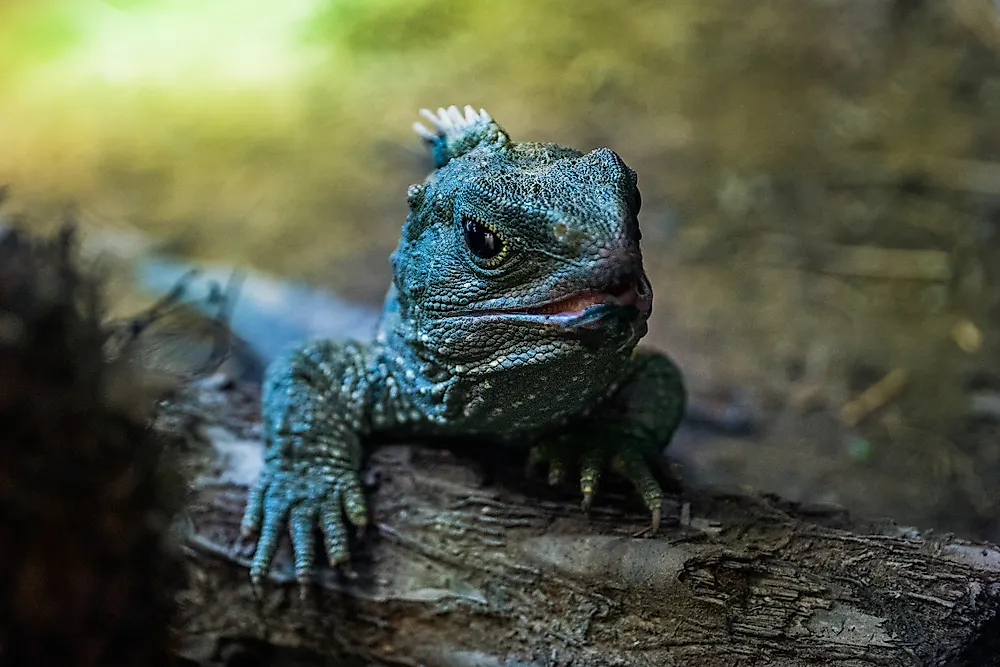Tuatara - A Unique Reptile Of New Zealand

A tuatara is a reptile native to New Zealand. It resembles lizards, but it is a member of a distinct lineage of order Rhynchocephalia. The name tuatara is derived from the local Maori language and translates to "peaks on the back." Tuatara is the only surviving species of the order although they flourished 200 million years ago. Its most viable ancestors are the squamates. In 1989, a second species of the order was discovered, but in 2009, researchers proved it a subspecies of the tuatara. Just like other native animals of New Zealand, invasive predators and habitat loss threaten the reptile. The tuatara was declared extinct in mainland New Zealand until 2005 when a small population was brought in from offshore islands.
Physical Appearance
The tuatara is grey and greenish brown. It measures 31 inches from head to tail and can weigh up to 2.9 pounds. Both males and females have a distinctive white crest along their backs, but it is more pronounced in males. The tuatara has three roles of teeth; two rows in the upper jaw and one in the lower. They do not have external ears, but unique features in the skeleton allow them to perceive sound. They shed their skins three or four times as juveniles and once as adults every year. When threatened they stiffen the spiny crest on their back making themselves look larger and intimidating.
Behavior
Tuatara are nocturnal and terrestrial reptiles. They are cold-blooded and therefore spend the entire day basking in the sun. However, they are more tolerant of cold temperatures than other reptiles. They hibernate during winter. During the bird migration, they invade the nests and feed on eggs. Both the male and female tuatara defend their territories and will bite intruders if they are threatened.
Reproduction
Tuatara take between 10 and 20 years to reach sexual maturity. Males and females mate in the midsummer, and the females lay eggs once in 4 years. It takes four years for the female to lay eggs and between 12 and 15 months for the eggs to hatch. Their average lifespan age is about 60 years, but they can live for 120 years and reproduce even when they are 100. In 2009, a male tuatara in New Zealand became a father at 111.
Cultural Significance
Tuatara have been part of the Maori culture for as long as the community has existed. They are featured in legends and considered the messengers of disaster and death. Women are culturally forbidden from eating the tuatara. They were featured in the New Zealand 5-cent coin until it was phased out in 2006.











